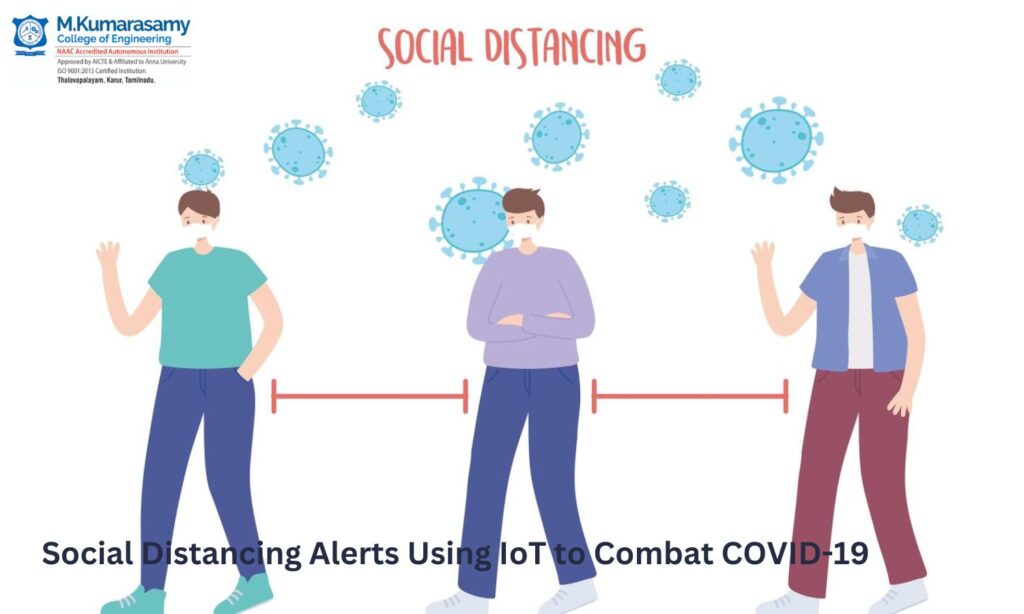The global outbreak of COVID-19 necessitated extraordinary measures to curb its spread. Consequently, social distancing emerged as a essential strategy. However, ensuring effective social distancing in public and private spaces presented numerous challenges. Therefore, the revolutionary concept of Social Distancing Alerts, a system powered by IoT (Internet of Things), offers a tech-driven solution to enforce and promote safe distancing practices.
The Role of IoT in Enforcing Social Distancing

IoT has proven to be a game-changer in numerous industries, and its application in healthcare and public safety during the COVID-19 pandemic is no exception. By leveraging IoT devices, Social Distancing Alerts ensure that individuals maintain the recommended distance from each other. Moreover, these alerts utilize sensors, wearable devices, and AI-powered platforms to detect proximity violations and promptly notify users.
For instance, wearable gadgets equipped with Bluetooth Low Energy (BLE) technology can monitor the distance between individuals in real time. If the distance falls below the prescribed threshold, the device triggers an alert. As a result, this innovative approach combines precision, scalability, and real-time feedback, making it an indispensable tool in crowded environments.
How Social Distancing Alerts Work
The implementation of Social Distancing Alerts involves multiple layers of IoT technology:
- Sensors and Devices: Sensors such as ultrasonic, infrared, and Bluetooth modules are embedded in wearables, badges, or smartphones. These sensors constantly measure the proximity between individuals.
- Data Transmission: The sensors communicate with a centralized system or a cloud platform using wireless protocols like Wi-Fi, BLE, or Zigbee.
- Processing and Analysis: Advanced algorithms analyze the received data to determine if a social distancing breach has occurred.
- Real-Time Alerts: If a breach is detected, the system sends alerts via sound, vibration, or notifications on a connected smartphone app.
- Data Reporting: Furthermore, the system generates reports to track compliance and identify high-risk zones, enabling targeted interventions.
Real-World Applications of Social Distancing Alerts
Social Distancing Alerts powered by IoT have found applications in diverse settings:
- Workplaces: Employers deploy IoT-enabled wearables to ensure a safe working environment. As a result, alerts minimize the risk of virus transmission among employees, especially in industries requiring physical presence.
- Public Spaces: Airports, malls, and railway stations benefit immensely from IoT systems that monitor crowd density and trigger alerts to enforce distancing. Additionally, this reduces the likelihood of super-spreader events.
- Healthcare Facilities: Hospitals and clinics use Social Distancing Alerts to protect healthcare workers and patients, especially in high-contact zones like waiting areas and wards. Moreover, these systems ensure compliance with safety guidelines.
Benefits of IoT-Powered Social Distancing Alerts
The effectiveness of Social Distancing Alerts lies in their precision and adaptability. Here are some notable benefits:
- Real-Time Monitoring: IoT devices provide instantaneous feedback, ensuring immediate corrective action. Furthermore, this enhances overall safety.
- Scalability: These systems can be scaled to monitor large areas, from small offices to sprawling campuses. Consequently, they suit diverse needs.
- Data-Driven Insights: The data collected enables authorities to identify patterns, hotspots, and compliance levels. Additionally, it helps in devising targeted interventions.
- Cost-Effectiveness: While the initial investment may seem high, the long-term benefits of preventing outbreaks outweigh the costs. Therefore, organizations find these systems valuable.
- Automation: Automated alerts reduce the reliance on manual monitoring, enhancing efficiency and accuracy. Moreover, this saves time and resources.
Challenges in Implementing Social Distancing Alerts
Despite their numerous advantages, Social Distancing Alerts face certain challenges:
- Privacy Concerns: Collecting and processing proximity data raises concerns about data privacy and misuse. Consequently, stakeholders must address these issues proactively.
- Initial Costs: Deploying IoT infrastructure involves significant upfront investment. However, the benefits of using this often justifies the expense that incurred over time.
- Technical Limitations: Sensor accuracy can vary in crowded or obstructed environments. As a result, optimizing these systems remains an ongoing effort.
- User Compliance: The effectiveness of these systems depends on individuals wearing or using the devices correctly. Therefore, user education is critical.
The Future of Social Distancing Alerts
The adoption of Social Distancing Alerts reflects a broader trend of integrating technology into public health initiatives. As IoT technology advances, these systems are expected to become more accurate, affordable, and user-friendly. For instance, colleges like MKCE, which incorporate such concepts into their curricula, play a crucial role in shaping the next generation of innovators and engineers.
Additionally, the integration of AI and machine learning can enhance the predictive capabilities of IoT systems, enabling proactive measures instead of reactive responses. For example, AI can analyze crowd movement patterns to forecast potential breaches, allowing authorities to take preventive action. Consequently, the reliance on manual interventions will decrease significantly.
Conclusion
The COVID-19 pandemic underscored the need for innovative solutions to enforce public health measures. IoT-powered Social Distancing Alerts have emerged as a transformative tool, offering real-time monitoring and actionable insights to combat the spread of the virus. By integrating these technologies into everyday life, institutions like MKCE are not only fostering awareness but also equipping individuals with the skills to develop and deploy similar systems in the future.
As the world continues to adapt to the challenges of pandemics, Social Distancing Alerts using IoT remain a beacon of hope, blending technology with public health to create safer environments. Therefore, the lessons learned and innovations developed during this crisis will undoubtedly shape the trajectory of IoT applications for years to come.

